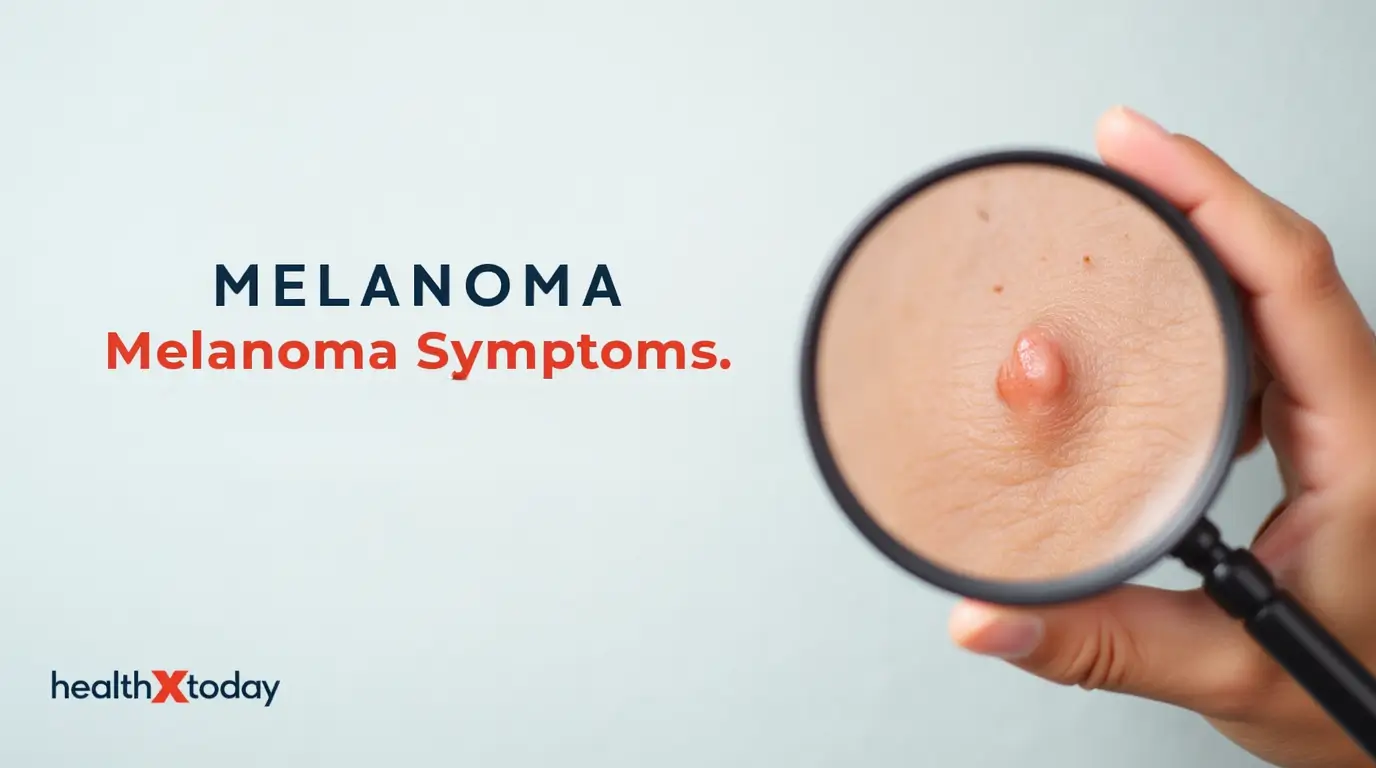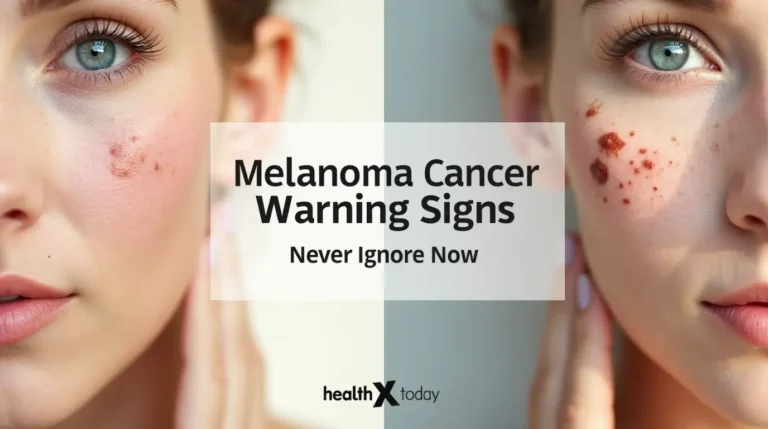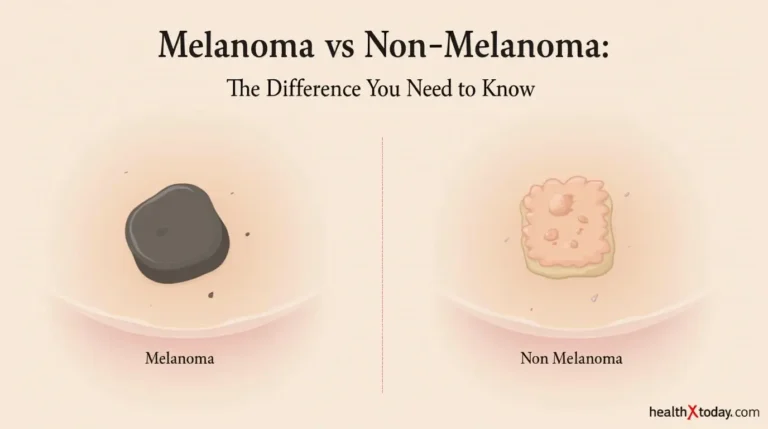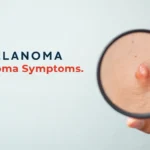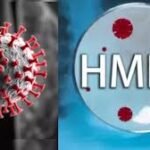We envision a world where everyone has the tools and knowledge to live a balanced, healthy, and fulfilling life. By providing reliable resources, personalized programs, and community support, we aim to be a beacon of hope for those on their health journey.
Table of Contents
Introduction to Melanoma

melanoma symptoms
Melanoma is a type of skin cancer that develops from melanocytes, the cells responsible for producing melanin, the pigment that gives skin its color. While melanoma is less common than other skin cancers, such as basal cell carcinoma and squamous cell carcinoma, it is considered the most serious due to its tendency to spread to other parts of the body if not detected early. The incidence of melanoma has been increasing over the past few decades, making awareness and early detection critical for effective treatment.
Melanoma typically manifests itself in the form of unusual moles or skin lesions that may change appearance over time. Unlike other skin cancers, which grow slowly and have a lower risk of metastasis, melanoma is known for its aggressive nature and can proliferate rapidly if left untreated. In fact, according to statistics from the American Academy of Dermatology, the lifetime risk of developing melanoma is approximately 1 in 29 for Caucasians, highlighting the urgent need for vigilance among high-risk populations.
Understanding the differences between melanoma and other skin cancers is vital for effective prevention and treatment strategies. Melanoma is distinguished by its specific characteristics and the methods used for diagnosis, which often involve identifying abnormalities in existing moles or the emergence of new skin lesions. This section will serve as a foundation for recognizing melanoma symptoms, emphasizing the importance of regular skin examinations and awareness of changes in the skin.
Ultimately, the early detection of melanoma significantly improves the prognosis and treatment options available to patients. By fostering an understanding of what melanoma is, we can better equip individuals to identify potential warning signs and seek medical consultation promptly. This knowledge is key in the ongoing efforts to combat melanoma and improve outcomes for those affected.
The Importance of Recognizing Symptoms
Awareness of melanoma symptoms is critical for effective early detection and treatment of this serious skin cancer. Melanoma can progress rapidly, and recognizing its signs can play a pivotal role in the patient’s prognosis. The survival rates for melanoma are considerably better when the disease is detected at an early stage. According to the American Cancer Society, the five-year survival rate for localized melanoma is approximately 99%, compared to about 66% for those whose melanoma has spread to nearby lymph nodes. This stark difference underscores the importance of vigilance when it comes to skin changes.
Common symptoms of melanoma include changes in existing moles or the emergence of new pigmented lesions. Melanoma may present itself with asymmetrical shapes, irregular borders, varied colors, and sizes larger than a pencil eraser. The ABCDE rule—Asymmetry, Border, Color, Diameter, and Evolution—serves as a helpful guideline for individuals to evaluate moles and skin changes effectively. By monitoring such characteristics, individuals can seek medical attention promptly if they notice any concerning signs.
Furthermore, regular skin examinations, both self-exams and professional checks, are essential components of a proactive healthcare strategy. Dermatologists recommend full-body skin checks annually, particularly for individuals at higher risk, such as those with a family history of melanoma, large atypical moles, or those who have frequently been exposed to ultraviolet light.
In addition to improving survival outcomes, enhancing awareness about melanoma symptoms can lead to increased public knowledge regarding skin health. Through educational initiatives, individuals are more likely to recognize early symptoms and understand the necessity of early intervention. Educational campaigns can help demystify melanoma and reduce the stigma surrounding skin cancer, encouraging more patients to seek advice and medical care without delay.
Common Symptoms of Melanoma

Melanoma, a serious form of skin cancer, often presents itself through distinctive symptoms that can be crucial for early detection. One of the primary indicators of melanoma is the alteration in existing moles or the emergence of new skin lesions. Understanding these changes is essential for prompt diagnosis and treatment. Key characteristics to observe include asymmetry, border irregularities, color variations, diameter, and evolving features of moles.
Asymmetry in moles indicates that one half looks different from the other. Typically, benign moles are symmetrical; thus, any noticeable asymmetry should be evaluated by a healthcare professional. Additionally, look for border irregularities; benign moles generally have smooth, even edges, whereas melanoma lesions often exhibit jagged, irregular, or blurred borders.
Color changes are another critical symptom of melanoma. While benign moles usually have a uniform color, a melanoma may display multiple shades or irregular pigmentation, including black, brown, or tan. It is also important to note any new colors emerging in a mole or lesion, which can indicate malignancy.
The diameter of a mole can also signify potential issues. A mole larger than 6 millimeters (approximately the size of a pencil eraser) warrants further examination, as melanomas often exceed this size. Lastly, the evolution of a mole or skin lesion is a significant symptom to track. Any changes in size, shape, texture, or color over time may suggest the presence of melanoma.
Awareness of these common symptoms of melanoma is paramount for early detection. Regular self-examinations of the skin and prompt consultations with healthcare providers upon noticing these changes can significantly improve outcomes. Identifying melanoma symptoms early is critical in managing and treating this potentially life-threatening condition effectively.
ABCDE Rule of Melanoma Detection
Understanding the ABCDE rule is vital for early detection of melanoma, a serious type of skin cancer that can arise from moles or skin lesions. This mnemonic serves as a guideline for individuals to assess their skin for potentially concerning characteristics that warrant further examination. The components of the ABCDE rule include Asymmetry, Border, Color, Diameter, and Evolving.
Asymmetry refers to the shape of a mole or spot; if you were to draw a line through the middle, the two halves would not match. Melanomas are often asymmetric, whereas benign moles are typically symmetrical. Individuals should strive to assess the symmetry of any new or existing moles on their skin.
Border examines the edges of a mole. Irregular, scalloped, or poorly defined borders are warning signs. Healthy moles usually have smooth, even borders. Mole edges that are jagged or blurred could indicate a need for professional evaluation.
Color relates to the pigment of the mole. A mole with multiple colors or uneven shades—such as browns, blacks, reds, or blues—may raise suspicions. While typical moles are generally uniform in color, a diverse palette of hues in a single spot can signal melanoma.
Diameter highlights size as a distinguishing factor. Moles larger than 6 millimeters (about the size of a pencil eraser) should be monitored closely, particularly if changes in size are noted. However, size alone is not the sole indicator; any concerning characteristics should prompt further assessment.
Evolving is a critical factor that looks at changes in a mole over time. Any changes in size, shape, color, elevation, or any other distinctive feature should be taken seriously. Tracking any alterations in moles allows individuals to be proactive in their skin health.
Understanding and applying the ABCDE rule can empower individuals to take charge of their skin health, noticing changes early and seeking prompt medical advice when necessary. Timely intervention is key in managing melanoma effectively.
Other Symptoms to Watch Out For

While skin changes are the most well-known indicators of melanoma, individuals should also be aware of other potential symptoms that can signal the progression of this serious condition. Itching, pain, or ulceration of the skin surrounding a melanoma site can frequently occur, and these sensations may suggest that the cancer has become more advanced. If any of these symptoms arise, especially in conjunction with a suspicious mole or skin lesion, it is crucial to seek medical advice promptly.
Additionally, systemic symptoms can manifest as melanoma progresses. Fatigue is a common complaint among patients and may vary in intensity. A considerable level of persistent tiredness that does not improve with rest can significantly impact daily activities. Weight loss that occurs without any change in diet or exercise routines is another concerning sign. This unintentional weight loss can result from the body’s response to cancer and the increased metabolic demands associated with tumor growth.
Swollen lymph nodes are another important symptom to monitor. Melanoma can spread to nearby lymph nodes, causing them to enlarge. If you notice any unusual swelling in the lymph nodes, particularly in the neck, underarm, or groin areas, it is essential to discuss these changes with a healthcare provider. These symptoms may not only indicate local spread but could also suggest that the melanoma is becoming systemic, affecting other parts of the body.
In summary, being vigilant about both skin and systemic symptoms can play a critical role in the early detection of melanoma. Understanding the wide range of potential signs enables individuals to take proactive steps towards assessment and treatment, significantly impacting outcomes.
Skin Types and Melanoma Risk
The risk of developing melanoma, a serious form of skin cancer, varies significantly among individuals based on their skin types. Understanding these differences is essential for early detection and effective prevention strategies. The Fitzpatrick scale is a widely used classification system that categorizes skin types into six categories based on the skin’s response to ultraviolet (UV) light exposure. These categories range from Type I, which characterizes individuals with very fair skin that burns easily, to Type VI, which includes those with very dark skin that rarely burns.
Individuals with fair skin, particularly those classified as Type I or Type II on the Fitzpatrick scale, are at a heightened risk for developing melanoma. This susceptibility can be attributed to lower levels of melanin, the pigment responsible for skin color, which provides some natural protection against the harmful effects of UV radiation. People with these skin types tend to tan very little, if at all, and are more prone to sunburns when exposed to sunlight, thereby increasing their likelihood of DNA damage and skin mutations that can lead to melanoma.
Conversely, individuals with darker skin types, such as Type V and VI, possess higher melanin levels, which offer greater protection against UV radiation. However, this does not imply that they are immune to melanoma. Research indicates that melanoma can indeed occur in these populations, but it might present differently. For instance, the lesions can be less visible due to the pigmentation of the skin, leading to delays in diagnosis and treatment. Furthermore, certain areas such as the palms, soles, and mucous membranes can be sites of melanoma in darker-skinned individuals, which may be overlooked during routine skin examinations.
In conclusion, recognizing the impact of skin type on melanoma risk is vital. Awareness of how different Fitzpatrick skin categories relate to melanoma presentation and detection can contribute to more effective screening practices and ultimately enhance patient outcomes.
Risk Factors for Melanoma
Melanoma, a serious form of skin cancer, can develop from various risk factors that significantly increase an individual’s likelihood of being diagnosed. Understanding these risk factors is vital for proactive skin health management and early detection efforts. One primary risk factor is genetic predisposition; individuals with a family history of melanoma are at a heightened risk. Certain genetic mutations, such as those found in the CDKN2A gene, have been linked to an increased chance of developing this skin cancer. Therefore, individuals with relatives who have had melanoma should consider regular skin examinations and maintain heightened awareness of any skin changes.
Another significant risk factor is sun exposure. melanoma symptoms; Ultraviolet (UV) radiation, primarily from the sun, can damage the skin’s DNA and lead to cancerous changes. melanoma symptoms; Research indicates that intense sun exposure, especially during childhood and adolescence, dramatically raises the risk of developing melanoma in later years. Additionally, a history of sunburns, particularly blistering sunburns, indicates a greater propensity for melanoma. melanoma symptoms; Each episode of severe sunburn can considerably increase the risk, emphasizing the necessity of sun protection measures, especially in young children.
The use of tanning beds is another crucial factor contributing to melanoma risk. melanoma symptoms; These devices emit UV radiation that can be even more intense than the sun, exacerbating skin damage and increasing cancer risk. melanoma symptoms; Those who frequently use tanning beds, especially those who start during their teenage years, are more likely to experience harmful skin changes that can lead to melanoma. melanoma symptoms; Awareness of these risks and adopting preventive measures, such as using sunscreen, wearing protective clothing, and avoiding tanning beds, can be instrumental in reducing the likelihood of melanoma development.
When to See a Doctor
Recognizing the signs that warrant a visit to a healthcare professional is vital for early detection of melanoma, a potentially serious form of skin cancer. melanoma symptoms; Individuals should be vigilant about skin changes and seek medical advice if they notice any atypical features emergent on their skin. melanoma symptoms; Among the commonly acknowledged warning signs is the transformation of existing moles or the appearance of new growths. melanoma symptoms; Any mole that exhibits asymmetry, irregular borders, varied colors, or a diameter larger than a pencil eraser should be closely examined by a dermatologist. melanoma symptoms; These characteristics are indicative of changes that could be consistent with melanoma.
In addition to unusual moles, it is important to monitor for symptoms such as itching, tenderness, or bleeding on the skin that does not heal properly. melanoma symptoms; These factors could signal underlying issues that require professional assessment. melanoma symptoms; Even if the changes seem minor, it is always advisable to consult a dermatologist for peace of mind. melanoma symptoms; Regular skin examinations, ideally at least once a year, are essential for early detection and can significantly enhance outcomes. melanoma symptoms; This proactive approach helps identify not only melanoma but also other skin conditions that could pose health risks.
Furthermore, individuals with a family history of melanoma or those who have had excessive sun exposure should remain especially vigilant. melanoma symptoms; It may be prudent to perform self-examinations routinely and familiarize oneself with one’s skin patterns to make it easier to detect variances. melanoma symptoms; While the majority of skin changes may not be harmful, early intervention is crucial for conditions like melanoma. melanoma symptoms; Hence, do not hesitate to consult a healthcare provider should any questionable skin changes arise; timely diagnosis could dramatically influence treatment success.
Conclusion and Call to Action
Awareness of melanoma symptoms is paramount in the ongoing battle against skin cancer. melanoma symptoms; As a malignant form of skin cancer, melanoma can strike any individual, yet early detection significantly increases the chances of successful treatment. melanoma symptoms; Vigilance in recognizing skin changes is essential; individuals should routinely examine their skin for new or unusual moles, changes in existing moles, or any skin lesions that exhibit asymmetry, irregular borders, varied colors, or rapid growth. melanoma symptoms; These characteristics, termed the ABCDEs of melanoma, serve as critical indicators for potential skin abnormalities.
Regular skin checks not only empower individuals but also facilitate early intervention, which is crucial for better prognoses. melanoma symptoms; It is advisable to perform skin self-examinations on a monthly basis or more frequently if there is a heightened risk, such as a family history of melanoma or previous skin cancers. melanoma symptoms; Sharing knowledge about melanoma symptoms with family, friends, and community members can create a ripple effect, broadening awareness and encouraging others to prioritize their skin health.
Furthermore, advocating for skin health entails supporting initiatives that promote regular dermatological check-ups and educational campaigns about sun protection strategies. melanoma symptoms; Simple measures, such as wearing sunscreen, avoiding peak sun hours, and wearing protective clothing, are integral to preserving skin health and reducing the risk of melanoma. melanoma symptoms; By collectively raising awareness and understanding around the symptoms of melanoma, we can improve detection rates and contribute to saving lives. It is imperative for everyone to take proactive steps in their health journey, ultimately fostering an informed and health-conscious community. melanoma symptoms; The importance of staying vigilant cannot be overstated, as it can lead to lives saved and enhanced quality of life for those affected by this formidable disease.
Did You Try this tips ?
There are no reviews yet. Be the first one to write one.
blood work brain health cancer treatment climate health diabetes treatments digestive health disease management disease mapping exercise plan fitness tips hair care hair growth hair treatment headache treatment health apps health foods health insurance health secrets health tips healthy habits healthy recipes heart disease heart health home workouts immune boost immune foods keto delivery lifestyle diseases medicine innovation melanoma treatment mental health morning exercise natural remedies non melanoma nutritional advice raw nutrition skin cancer skin care skin health sleep exercise sleep technology telemedicine services viral threats walking benefits weight loss
melanoma symptoms: get info you need to know now 1
Melanoma is a type of skin cancer that develops from melanocytes, the cells responsible for producing melanin, the pigment that gives skin its color. While melanoma is less common than other skin cancers, such as basal cell carcinoma and squamous cell carcinoma, it is considered the most serious due to its tendency to spread to other parts of the body if not detected early. The incidence of melanoma has been increasing over the past few decades, making awareness and early detection critical for effective treatment.
